Why is the coolant temperature high. What operating temperature should the engine be
Overheating of the engine is the worst thing that can happen to us on the road. Because of the high temperature, and you have to go to the technical center for expensive repairs. As a rule, overheating of the car happens in a traffic jam. At this moment, every driver prays that the flow of cars will not stop. The fact is that in the process of moving your engine receives additional air flow and thereby cools. So what are the causes of engine overheating and how can we avoid it?
It is equally important to know:
There are several main reasons why the engine temperature starts to rise and if the car is not turned off, it will overheat.
1) Low coolant level

The most common cause of an engine overheating is a low coolant level.
Your cooling system in your car is filled with antifreeze (coolant) that circulates through closed system, removing excess heat that is generated during engine operation. If there is not enough antifreeze in the cooling system, then the heat from the engine will not be removed and the car's power unit will start to warm up.
Usually, when the engine temperature rises above the operating temperature (90 degrees), experienced drivers advise turning on the stove in the car, thereby letting excess heat from the engine into the car. But in fact, if the coolant level is low, then turning on the stove will not completely protect the engine from overheating.
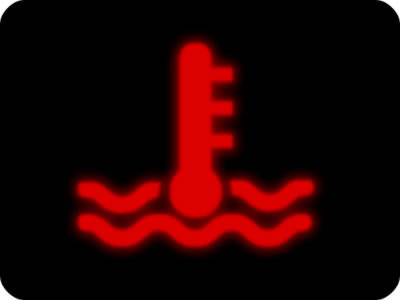 Therefore, if you notice that the engine temperature has crept up (above 90 degrees) and is rapidly moving towards the dangerous red zone, then stop the car, turn off the ignition and be sure to check the level of antifreeze in the cooling system.
Therefore, if you notice that the engine temperature has crept up (above 90 degrees) and is rapidly moving towards the dangerous red zone, then stop the car, turn off the ignition and be sure to check the level of antifreeze in the cooling system.
2) Electric cooling fan failed
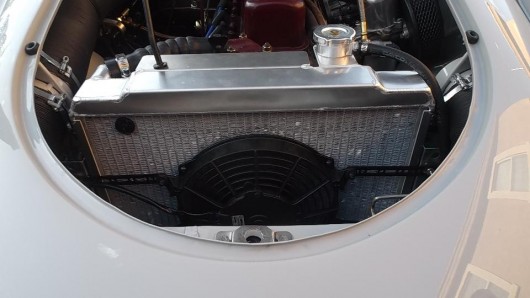
If your car has an electrical cooling fan that has failed (no rotation when the engine is hot) then this can cause the car to overheat.
The fact is that the electric cooling fan transmits cold air from the street to the engine, which passes through the cooling radiator. The fan cools the motor when your car is not moving. high speed helping the engine cool.
When the engine temperature begins to rise and move towards the red zone, then stop the car and open the hood, check if the cooling fan is working. If the fan does not spin, then you need to find out the cause of the malfunction:
- Bad contact feeding the fan:
To check the cooling fan contact, remove the wiring harness that powers the fan. Use two wires to power the fan directly from the battery. If the cause of the fan malfunction is in the wiring harness, then the fan will work.
If your car does not have a radiator sensor, then this test method may not work. Then by removing the electrical connector from the fan, you can short the fan connector contacts. If it is correct, then the fan will work.
- Faulty fan switch sensor
Many vehicles have a temperature sensor that turns on the cooling fan when the coolant reaches a certain temperature.
 In order to check that the sensor is working, it is also necessary to remove the wiring harness from the supply fan and close the fan contacts. If the fan is in good condition, it will start working.
In order to check that the sensor is working, it is also necessary to remove the wiring harness from the supply fan and close the fan contacts. If the fan is in good condition, it will start working.
3) Thermostat failure

If you drive at high speed, the engine load in your car is much greater than when driving at low speed.
 Due to the load, the motor needs more cooling. To do this, the cooling system, when driving at high speed, supplies more coolant to the system to cool the engine. This process is regulated by a thermostat, which can periodically fail.
Due to the load, the motor needs more cooling. To do this, the cooling system, when driving at high speed, supplies more coolant to the system to cool the engine. This process is regulated by a thermostat, which can periodically fail.
For example, the thermostat may not open, resulting in a shortage of coolant in a certain area of the system to cool the engine. In this case, your engine will heat up very quickly to critical values.
 Therefore, never forget to constantly monitor the engine temperature using the gauge on the dashboard.
Therefore, never forget to constantly monitor the engine temperature using the gauge on the dashboard.
With any shifts in the temperature arrow towards the red value, stop the car and check the cooling system.
4) Broken cooling fan belt
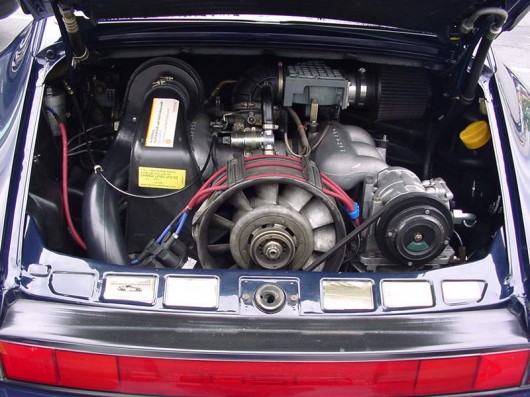
In many cars that are operated on our roads, cooling fans are installed,. Unlike an electric fan, a belt-driven fan can only fail if the belt breaks.
 In this case, the repair of the cooling fan consists only in replacing the belt, while repairing the electric fan will cost much more.
In this case, the repair of the cooling fan consists only in replacing the belt, while repairing the electric fan will cost much more.
5) Dirty radiator
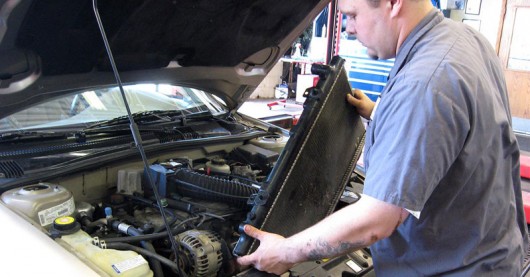
If your car has driven more than 80,000 km, then most likely your cooling radiator is heavily contaminated, which can cause the engine to overheat.
Overheating of the engine is the worst thing that can happen to us on the road. Due to the high temperature, the engine of your car can fail, and you have to go to a technical center for expensive repairs. As a rule, overheating of the car happens in a traffic jam. At this moment, every driver prays that the flow of cars will not stop. The fact is that in the process of moving your engine receives additional air flow and thereby cools. So what are the causes of engine overheating and how can we avoid it?
There are several main reasons why the engine temperature starts to rise and if the car is not turned off, the car will overheat.
1) Low coolant level

The most common cause of an engine overheating is a low coolant level.
Your car's cooling system is filled with antifreeze (coolant) that circulates in a closed system, removing excess heat generated by the engine. If there is not enough antifreeze in the cooling system, then the heat from the engine will not be removed and the car's power unit will start to warm up.
Usually, when the engine temperature rises above the operating temperature (90 degrees), experienced drivers advise turning on the stove in the car, thereby letting excess heat from the engine into the car. But in fact, if the coolant level is low, then turning on the stove will not completely protect the engine from overheating.
Therefore, if you notice that the engine temperature has crept up (above 90 degrees) and is rapidly moving towards the dangerous red zone, then stop the car, turn off the ignition and be sure to check the level of antifreeze in the cooling system.
2) Electric cooling fan failed

If your car has an electrical cooling fan that has failed (no rotation when the engine is hot) then this can cause the car to overheat.
The fact is that the electric cooling fan transmits cold air from the street to the engine, which passes through the cooling radiator. The fan cools the motor when your car is not moving at high speed, helping the engine cool.
If, while driving, you saw that the engine temperature began to rise and move towards the red zone, then stop the car and, by opening the hood, check if the cooling fan is working. If the fan does not spin, then you need to find out the cause of the malfunction:
- Bad contact feeding the fan:
To check the cooling fan contact, remove the wiring harness that powers the fan. Use two wires to power the fan directly from the battery. If the cause of the fan malfunction is in the wiring harness, then the fan will work.
If your car does not have a radiator sensor, then this test method may not work. Then by removing the electrical connector from the fan, you can short the fan connector contacts. If it is correct, then the fan will work.
- Faulty fan switch sensor
Many vehicles have a temperature sensor that turns on the cooling fan when the coolant reaches a certain temperature.
In order to check that the sensor is working, it is also necessary to remove the wiring harness from the supply fan and close the fan contacts. If the fan is in good condition, it will start working.
3) Thermostat failure

The most likely cause of a car overheating at high speed is a thermostat malfunction. If you drive at high speed, the engine load in your car is much greater than when driving at low speed.
 Due to the load, the motor needs more cooling. To do this, the cooling system, when driving at high speed, supplies more coolant to the system to cool the engine. This process is regulated by a thermostat, which can periodically fail.
Due to the load, the motor needs more cooling. To do this, the cooling system, when driving at high speed, supplies more coolant to the system to cool the engine. This process is regulated by a thermostat, which can periodically fail.
For example, the thermostat may not open, resulting in a shortage of coolant in a certain area of the system to cool the engine. In this case, your engine will heat up very quickly to critical values.
Therefore, never forget to constantly monitor the engine temperature using the gauge on the dashboard.
With any shifts in the temperature arrow towards the red value, stop the car and check the cooling system.
4) Broken cooling fan belt

In many cars that are operated on our roads, cooling fans are installed, which are controlled by a belt drive. Unlike an electric fan, a belt-driven fan can only fail if the belt breaks.
In this case, the repair of the cooling fan consists only in replacing the belt, while repairing the electric fan will cost much more.
5) Dirty radiator

If your car has driven more than 80,000 km, then most likely your cooling radiator is heavily contaminated, which can cause the engine to overheat.
In order to avoid this, it is necessary to flush the radiator every year. It is advisable to change the coolant with the cleaning of the radiator. While manufacturers recommend changing your antifreeze every 3 years, we strongly recommend that you change your coolant every year.
In conclusion, we would like to once again remind all motorists that in addition to regular checks of the entire cooling system (especially before a long trip), it is necessary to periodically conduct a complete diagnosis of the operation of all the most important vehicle systems. Remember to check the engine oil level regularly. Remember that by maintaining the engine oil level at optimal values, you reduce the load on the engine and thereby prevent unnecessary engine heat.
The lower the load on the engine, the longer the service life of the power unit of the machine.
The main factor in the proper operation of any car is the control of engine temperature. In order to avoid breakdowns of the internal combustion engine, leading to costly repairs, it is worth paying attention to the temperature of the power plant, and knowing all the nuances associated with it.
This article describes in detail what the operating temperature of the engine is, what should be done at elevated temperatures. How to check and see the engine temperature, at what engine temperature you should take appropriate measures, and much more to ensure that the engine is running in the right mode!
Purpose of temperature monitoring
In every engine internal combustion pistons are located, when the piston is directed to the bottom dead center, a lot of energy is expended, which, in turn, gives off a large amount of heat that has a high temperature. As everyone knows, the engine is made of metal material, and metal is considered to be a very temperature sensitive material.
At high temperatures, the metal has the property of expansion, which entails the deformation of areas for which it is necessary to have accurate dimensions to ensure the ideal operation of the motor. Each vehicle has a dedicated engine cooling system that maintains the optimum temperature for operation while avoiding warping of critical parts.
How to Check Engine Temperature
How to check engine temperature? The temperature of the gasoline engine is determined by the sensor, which is located on the instrument panel. On the sensor there is a scale with marks indicating the value of degrees, as well as a color scale showing the degree of heating - the closer to red, the higher the temperature.
If there are problems in its operation, it is better to immediately contact the specialists, because how to check and repair the device with them will be faster and better.

If the previously tested temperature sensor has stopped functioning for some reason, then you can use a special tester with a temperature sensor. Such a tool is easy to find in an electrical store.
To determine the temperature of the engine with a tester, it is necessary to attach the tester's sensor with silicone to the sensor installed on the engine, and wait a few minutes, the tester's display will detect and show the temperature. This is how the engine temperature is measured.
And how to check the temperature of antifreeze? To determine the temperature of the coolant, we attach the tester sensor to the cooling system hose, also using silicone.
Working temperature
The operating temperature of the engine depends on the cooling system. The purpose of the system is to provide favorable operating conditions for the engine, and to maintain them. During the combustion of the fuel mixture, a temperature closer to 2000 degrees is reached.
The cooling system reduces this indicator as much as possible, maintaining the temperature in the region of 80 - 90 degrees. This temperature is the optimum operating temperature.
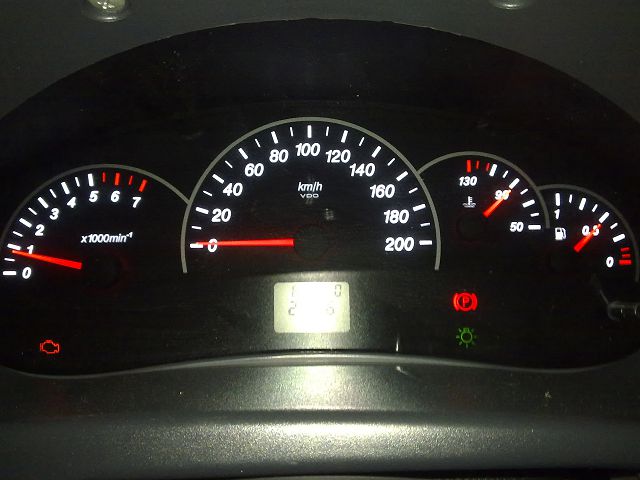
What is dangerous high temperature
The increased temperature in the engine leads to boiling and evaporation of antifreeze. After the liquid leaves the system, the temperature rises sharply, which leads to overheating and deformation of the engine, the internal combustion engine parts begin to expand and change. Ultimately, the engine jams, which is fraught with its failure. In this case, the engine is difficult to revive and it will cost a lot.
The permissible temperature in the vehicle depends on the properties of the coolant. When pouring water, the temperature limit is 100 degrees. Antifreeze withstands in the region of 110 - 140 degrees Celsius, therefore, operation is allowed at no more than 110 degrees.
How to restore normal internal combustion engine temperature
How is the operating temperature of the engine restored? First of all, at a high temperature, it is worth checking the amount of antifreeze in the system, but if it is small or not there at all, it is necessary to fill it. In the absence of a tank for coolant, it should be poured into the radiator.
When pouring directly into the radiator, care must be taken to avoid burns to the body due to hot liquid. The next step is to check the system for leaks. It will not be superfluous to check the radiator. If there is a strong overheating of the engine, then it is necessary to diagnose it.
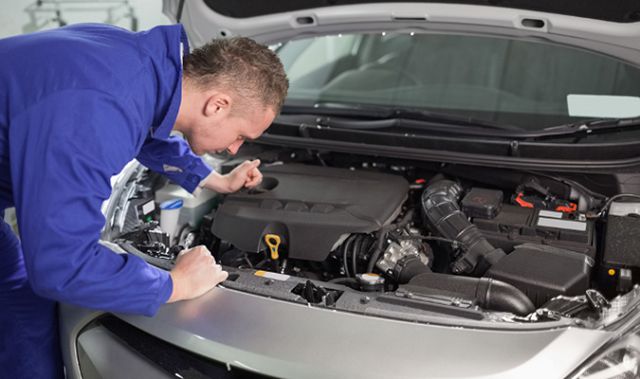
To comply constant temperature, it is worth monitoring the liquid level in the tank, topping it up in time, and also checking the temperature sensor for serviceability.
At what temperature should you start moving?
The operating temperature of the engine is 80-90 degrees in winter. At a positive temperature environment, you can start moving at a temperature of 70 - 80 degrees. Since the engine is not subjected to external cooling in summer, its performance increases, and therefore it is not worth warming it up to high temperatures before driving.
Normal engine temperature in winter
The optimum temperature of the engine in winter should reach 80 - 90 degrees, which will ensure the normal operation of the mechanisms. At what temperature does water freeze in an engine? This usually happens at temperatures below -3 degrees. It costs no more than seven minutes to warm up the car at high speeds, and no more than five minutes at low speeds.
Warming up the internal combustion engine
The process of warming up the engine is very simple and does not require loss of time. After starting the engine, it needs to work on Idling about five to seven minutes until the coolant temperature reaches +40 - +50 degrees. The warm-up time depends on the outdoor temperature.

In most cases, this is enough for normal engine operation. At very low temperatures, the internal combustion engine is heated using special devices that first warm up the crankcase to warm the oil, and then start the engine, keeping it at high speeds.
Engine insulation
To accelerate the warming up of the engine in winter and to maintain the optimum temperature, it is worth insulating it. There are several ways to insulate:
- Auto blanket - is a blanket filled with special wool used in fireproof shields and in the insulation of gas and oil pipelines. You can buy such a blanket, or if you have the material, make it yourself. The benefit of the blanket is that its composition can withstand high temperatures and has low thermal conductivity.
- Electric heater - is considered an advanced heating option. The disadvantage of this method is that it requires a power supply of 220 volts, which forces the owner to keep the car near the outlet. It also takes 20-30 minutes for the electrical warm-up to fully warm up the engine.
- Autonomous heater - the most The best way warm-up before starting, but also the most expensive. Such a heater is a system for starting the engine when it has cooled down, and turning it off when a certain temperature is reached. As a rule, an autonomous heater is adjusted by time, or by a certain temperature.

Freezing engine
If there is no antifreeze or antifreeze in the cooling system, but water is used instead, it is not a problem if the level is maintained in time. But it's not scary only in the warm season. In winter, water instead of antifreeze can damage the engine as seriously as possible.
Water can freeze at a temperature of zero degrees, which in any cold snap will have a bad effect not only on the cooling system, but also on the engine itself.
As much as possible, the engine will remain intact, filled with water, at a temperature of -3 degrees. In the presence of water in the radiator and cooling system, at a very low temperature, there is a chance of an engine split, the restoration of which, in this case, is considered unrealistic.
Before leaving, it is initially required to visually inspect the vehicle for leaks and malfunctions. When driving a car, you need to monitor all indicators of devices. Important data are engine readings. Problems with the cooling system can lie in wait at any time of the year. Hot weather promises possible overheating, cold winter cold can lead to excessive cooling of the engine.
What is the reason for the decrease in temperature
Any technique is not immune from the failure of some components and assemblies. It is necessary to pay attention to the condition of the machine and its systems. An unpleasant situation, when the engine temperature drops while driving, occurs due to malfunctions of the elements. To understand the essence of the problem, it is necessary to have general idea about how the power plant is cooled. It is necessary to control the level of the coolant and the condition of the connecting pipes and the radiator itself. The system has small and large cooling circuits. The difference is that the complete circulation circuit drives fluid through the radiator. The mechanism that switches the circuits is called a thermostat. Situations when the engine temperature does not rise often occur in winter. Rarely on the instrument panel, the indicator of the working fluid status is faulty. It is possible to use some materials for the insulation of the power plant.
How to diagnose the cause of a decrease in engine temperature
If in motion the sensor arrow falls and stops responding for some time, then the problem is the sensor itself is malfunctioning, and it will need to be replaced.
Movement is carried out on average speed(70 km / h), while maintaining the engine. In most cases, the problem is a stuck thermostat. When the heat-removing fluid is heated, the device switches the stroke to a large circle of circulation and performs the function of a regulator. In winter, the liquid flows almost all the time along a small circuit without the participation of a radiator. 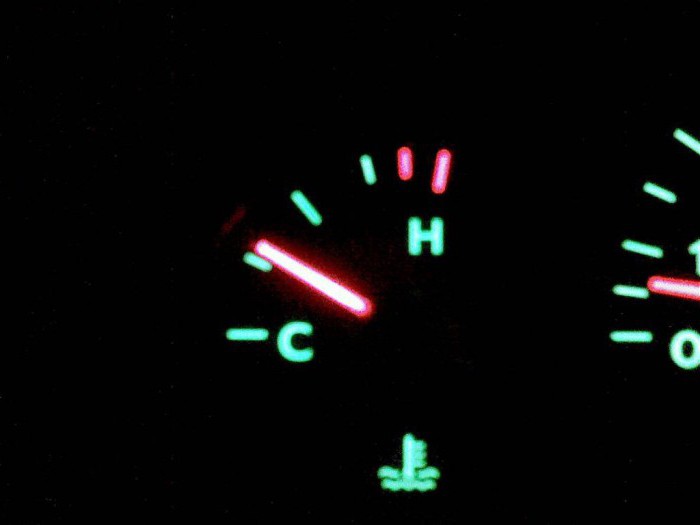 Natural airflow is enough to maintain the operating temperature of a running engine. But if the thermostat is jammed in the open position, the heat sink will not be able to fully occur. The power plant simply will not be able to generate enough heat to heat the heat-removing medium in the mode of a large circulation loop. This will require a thermostat replacement.
Natural airflow is enough to maintain the operating temperature of a running engine. But if the thermostat is jammed in the open position, the heat sink will not be able to fully occur. The power plant simply will not be able to generate enough heat to heat the heat-removing medium in the mode of a large circulation loop. This will require a thermostat replacement.
Checking the operation of the temperature controller can be carried out without moving the car. On site, you will need to start and warm up the car for 20-30 minutes. After these steps, open the hood of the car and try heating the pipes at the top and bottom of the radiator. One tube should be warm, the other cold. If the nozzles have equal temperature then the thermostat is out of order.
If the car engine warms up for a long time and the engine temperature does not rise, the reason is a device valve malfunction.
Features of cooling domestic cars
The winter season never passes carefree for motorists who own early Zhiguli brands. Engine temperature (VAZ-"six" is no exception) is often disappointing due to a sufficient number of flaws in the design of the thermostat and cooling system pipelines. There is a possibility in the cold season that the motor will not be able to reach operating temperature due to the natural blowing of the block. Therefore, motorists use the function of closing the blinds located near the radiator. In their absence, other devices may be used. 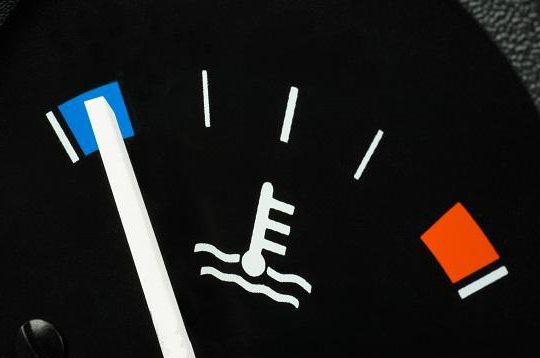 Many car owners use engine insulation (a blanket or a special fabric is placed that retains heat). There is a method for keeping the system warm when moving - to dismantle it to avoid additional airflow.
Many car owners use engine insulation (a blanket or a special fabric is placed that retains heat). There is a method for keeping the system warm when moving - to dismantle it to avoid additional airflow.
What should be the temperature of the power plant
When the motor is running, the nominal indicators of its heating fluctuate between 80-90 degrees. Low values will mean problems. If the required heat exchange is not maintained, fuel consumption will increase and power will be lost. Before starting the movement, the motor needs to warm up to 40-50 degrees.
What actions to take to troubleshoot
The easiest way is to replace the faulty device. But on early brands of domestic production, even new thermostats do not always cope with their function when the engine temperature systematically drops while driving. 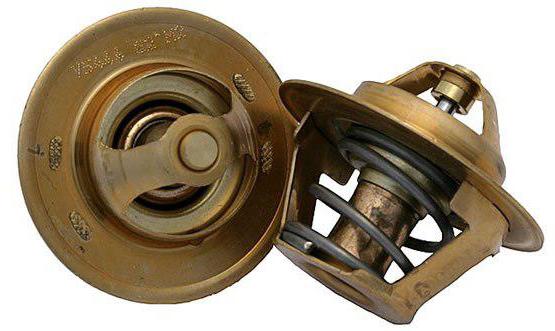 The reason for the trouble is the imperfection of its design. There is a way to install more advanced regulators. They are installed on the tenth VAZ model. Such a thermostat is equipped with six holes, is able to ensure that the engine temperature is effectively maintained in winter, and is collapsible. In the subsequent time, it will not be necessary to completely change the node, only faulty elements. Moreover, in the summer season, the operation of thermostats does not differ.
The reason for the trouble is the imperfection of its design. There is a way to install more advanced regulators. They are installed on the tenth VAZ model. Such a thermostat is equipped with six holes, is able to ensure that the engine temperature is effectively maintained in winter, and is collapsible. In the subsequent time, it will not be necessary to completely change the node, only faulty elements. Moreover, in the summer season, the operation of thermostats does not differ.
Is it possible to slow down the cooling of the motor in the cold
In the past, different materials have been used to create engine insulation. These are different felt fabrics that are in circulation. But such solutions did not keep the heat for long. Now modern heat-insulating automobile blankets are used.  Their composition does not allow ignition, which has a positive effect on the safety of the vehicle. Also, numerous engine warm-ups are not required. This will save time and fuel. When too severe weather conditions are observed, then such techniques will be able to keep warm in a short period of time. It is possible to use special covers for the radiator. Its lower part, together with the pipe, must be thermally insulated in order to maintain a stable temperature of the running engine.
Their composition does not allow ignition, which has a positive effect on the safety of the vehicle. Also, numerous engine warm-ups are not required. This will save time and fuel. When too severe weather conditions are observed, then such techniques will be able to keep warm in a short period of time. It is possible to use special covers for the radiator. Its lower part, together with the pipe, must be thermally insulated in order to maintain a stable temperature of the running engine.
Steps to Winterize Your Cooling System
The winter period of operation is difficult for all vehicle owners. To be fully prepared will help the preparatory work. It is necessary to check the operability of the protective shutters, the fan and pump drive belt, fill in the liquid for working at low temperatures (antifreeze, antifreeze), check the condition of the thermostat.  The amount of antifreeze that needs to be filled into the system should be 5-6% less than a simple liquid - it tends to expand when heated. When switching to winter mode, it is necessary to drive a chemical reagent through the cooling system in order to remove scale and rust. When the engine temperature drops while driving, the algorithm of actions is clear.
The amount of antifreeze that needs to be filled into the system should be 5-6% less than a simple liquid - it tends to expand when heated. When switching to winter mode, it is necessary to drive a chemical reagent through the cooling system in order to remove scale and rust. When the engine temperature drops while driving, the algorithm of actions is clear.
Use of water as a cooling medium
The use of water for cooling the power plant in winter is not recommended, but allowed. It is necessary to fill the system with already heated water in order to exclude heavy parts with increased wear. The radiator and motor must be insulated. Warm water is required to be filled with open drain taps several times. Then close the taps, fill the system and start running.  After the end of the trip, the liquid must be drained when it cools down to 45-50 degrees. If the system is emptied immediately upon arrival, cracks and other defects may appear. Leaving the system with water in frosty conditions is unacceptable. When freezing, the liquid will expand and cause the engine, radiator and other components to become unusable.
After the end of the trip, the liquid must be drained when it cools down to 45-50 degrees. If the system is emptied immediately upon arrival, cracks and other defects may appear. Leaving the system with water in frosty conditions is unacceptable. When freezing, the liquid will expand and cause the engine, radiator and other components to become unusable.
Do-it-yourself thermostat check
When the engine temperature drops unreasonably while driving, you will need to dismantle this element, prepare a container with liquid, place the device there and find out at what temperature the valve will open. If this does not happen, there is a malfunction.
To carry out work on the removal of any mechanisms, you need to have an idea about their structure. Otherwise, other unplanned problems may occur. If there is no idea about the arrangement of mechanisms, then it is worth contacting specialists who perform these works qualitatively. They will additionally give some useful tips and answer your questions.
The engine under the hood should run like clockwork - this is the dream of any motorist. Unfortunately, it is not so easy to achieve the desired result, and for this it is necessary to make certain efforts. Any driver will say that if you regularly look under the hood, conduct a technical inspection and eliminate minor defects, then the car will become a reliable friend.
Of course, the problems are completely different. It is quite difficult to predict what exactly might happen in the near future. In addition, sometimes it is not so easy to determine the cause of problems. For example, if the engine of your iron horse is constantly heated, then you need to quickly fix the problem. But what needs to be done for this? And most importantly, why does the engine overheat?
Reasons for high temperatures
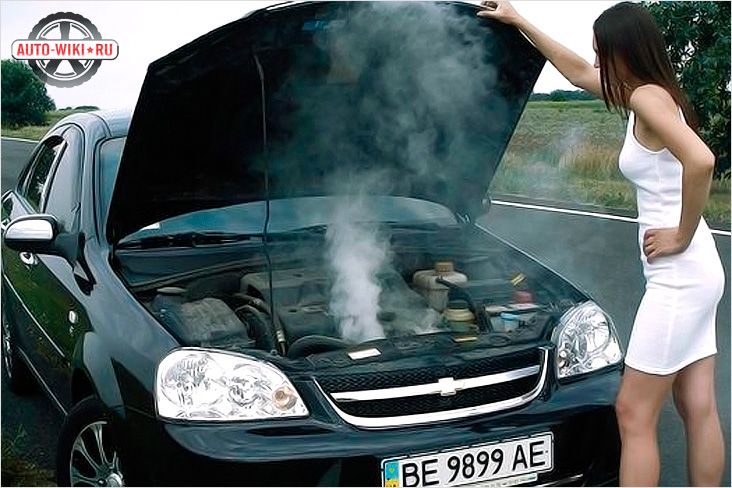
It must be said right away that there are quite a few reasons. Actually, it is this fact that makes the solution of the problem so difficult. It may well turn out that the whole thing is just poor cooling and low coolant levels. However, in some cases the reason lies much deeper. Some small, but cunningly hidden, malfunction spoils, as they say, all the fun.
What should be done in such a situation?
In such a situation, it is not necessary to take the car to the service. You can try to do it on your own. First of all, you need to do some things:
- check the serviceability of the sensor for determining the temperature and coolant level;
- remove various hood heaters, if any;
- check the coolant level in the expansion tank, as well as the oil in the engine.
- check thermostat.
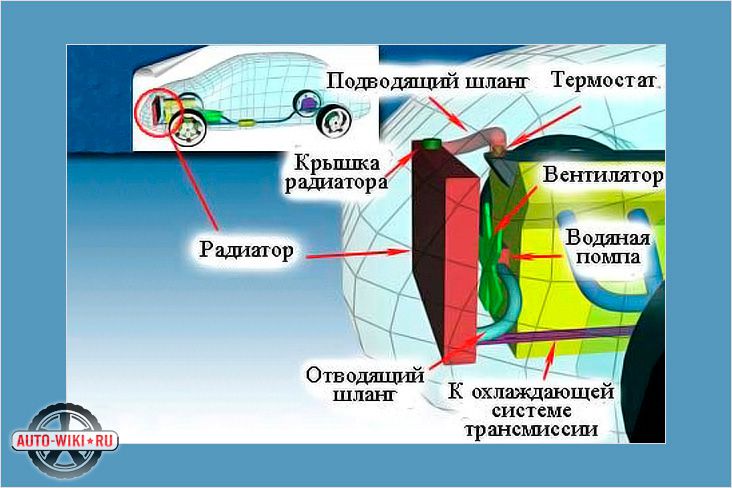
It may seem that these are simple and even stupid actions, but in fact there is some probability that it is because of this that overheating occurs. For example, some motorists forget to remove radiator heaters from winter.
After all this, it is worth checking the condition of the cooling system itself. It is important to find out if it functions correctly. Pay attention to the level of pollution. If you had to use radiator sealants before, then they may have caused contamination, which in turn disabled the entire cooling system. Also, the reason may lie in external pollution, especially if overheating is observed while driving.
The reason may lie in the malfunction of the thermostat. After starting the engine, it begins to supply coolant as soon as the temperature reaches 87 gruds. At 102 degrees it opens completely. If there are malfunctions with the thermostat (it is stuck in the closed or open state), which usually leads to overheating.
Some motorists in such cases simply ignore the pressure in the cooling system, but this is a very important point that should not be ignored. When heated, the pressure rises, which is regulated by special valves. If the pressure rises and is not regulated, then the motor is very hot.
You should also check the radiator fan and all sensors. Some problems often happen to them, and it is quite difficult to notice right away.
You can check the ignition system, in particular the UOZ installation. Early ignition increases engine temperature. However, you should not make any changes if everything is installed correctly. This is far from the best way to regulate the temperature.
In addition to all of the above, there are many other likely causes that affect the increase in the operating temperature of the engine. If you cannot install them yourself, then it is better to seek help from professionals. You shouldn't expose your car to such a big risk that occurs when driving with an overheated engine.
Video
The following video also discusses the causes of engine overheating:






